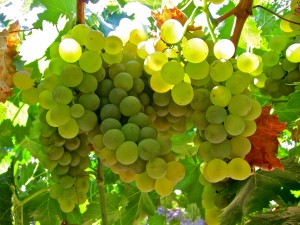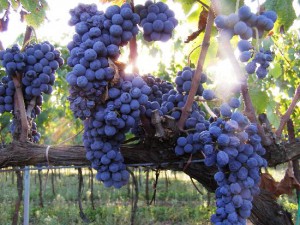
Discover Unsung Italian Grapes & Wines
I suppose that we have made progress since we have to dig a bit deeper to uncover the unsung varietals of Italy. Not long ago many grapes that now enjoy minor-celebrity status like: Aglianico, Arneis, Cortese, Falanghina, or Verdicchio were virtually unknown. (If you want to learn about these and more grapes read – Speak Italian Grapes and don’t miss our Italian Wine Primer.)
Lucky for us, Italy is a deep treasure chest of wine and wine varietals as each region has something new and original to offer. Many grapes that had long gone out of favor are now finding winemakers to champion their unique qualities. In short this is what I love about wine – despite three decades of study there is always something new to discover.
I have assembled a small list of varietals and the wines they create. These grapes and wines are not often seen outside of Italy but I believe that they will find a steadily growing fanbase.
Unsung White Italian Varietals
Pecorino – is a terrific Italian variety that was nearly lost. In the years where cooperative-driven winemaking was king Pecorino was ripped out and replaced with varietals like Trebbiano that produce tons of fruit with little effort. By the 1970s it was thought by many to be extinct but in the 80s a small wine producer in the Marche region found a few vines while searching for native grapes.
In the 90s, a handful of producers in Marche and Abruzzo had enough mature vines to produce small quantities of Pecorino-based wines. The results were very favorable as Pecorino wines just flow over you with their distinctive floral tones and bright natural acidity. This is rapidly becoming one of the favorite white grapes.
In the 21st century Pecorino plantings have grown in Central Italy with the region of Lazio becoming a real player along with Marche and Abruzzo. Recently in 2011, the Marche region DOC of Offida was elevated to DOCG status (the top) for white wines made primarily with Pecorino or Passerina (this is another grape you should know).
Pecorino means “little sheep” and it is said that the name was given as sheep flocking in vineyards favored the small green berries. Of course there is a cheese of the same name made also in Central Italy. Luckily the wine and the cheese pair beautifully.

Grapes for beautiful Italian Vermentino wine
Vermentino – is an Italian varietal that is utilized in a number of the nation’s regions from north to south. Vermentino is also an important grape in the south of France and portions of Spain.
In Italy, Vermentino is enjoying renewed interest thanks to the bright and approachable wines made on the island of Sardinia. Vermentino is now Sardinia’s primary white grape and today nearly 70% of Vermentino grown in Italy is found on the island.
Vermentino also remains important in Tuscany, Liguria, and Piedmont to a lesser degree.
The wines made with Vermentino are beautifully floral with exotic fruit notes, bright acidity, and mineral accents. Typically the wines are dry while Vermentino does produce great dessert-style wines thanks to its vibrant natural acidity. Dry Vermentino is very food friendly, pairing with virtually anything from the sea with octopus, shellfish, and oily fish varieties being the best matches.
Erbaluce – is a great white varietal grown nearly exclusively in Piedmont. Erbaluce is a grape unfamiliar to many wine lovers and professionals. Just 800 acres of the rare grape can be found in Italy and therefore the world.
The top expression of Erbaluce is found in the tiny DOCG zone of Erbaluce di Caluso. The wines have fresh flavors redolent of ripe apples, peach, and pears with a bright mineral accent and a generous dose of acidity.
For years some viticulturists had tried to prove that Erbaluce was related to Arneis but all attempts in this regard have been proven false. All evidence points to the fact that Erbaluce is a unique varietal that has been documented in its native Piedmont since 1606.
Unsung Red Italian Varietals
Cesanese – is a varietal on the fast track to success. This intriguing and complex varietal is grown nearly exclusively in the Italian region of Lazio. For most of its life, Cesanese was used to create sweet wines with a mild fizzy texture. In many ways the old traditional Cesanese wines were much like Lambrusco wines.

Stunning Italian Cesanese Grapes
Fortunately the recent push to discover Italy’s long-forgotten or abused grapes has resulted in a serious second look at Cesanese. In truth, the grape itself must carry some of the blame. Cesanese is fickle in the vineyard and even in the warm Lazio summer the grape is very slow to fully mature often hanging until October to reach its full potential.
Careful clonal experimentation and selection have identified the varieties favored for serious, dry red wine production. Cesanese di Affile (confusingly also a name of a DOC district) is the consensus champion clone. The top growing zone for Cesanese has also been identified as Cesanese del Piglio was elevated to DOCG status in 2008.
When treated with care Cesanese produces wonderfully complex wines with flavors of red and black cherry supported by accents of pepper, earth, and dried flowers. The wines are frequently superb and pair with braised meats and sausages, as well as a classic Roman oxtail ragu. (Discover more about Cesanese here.)
Nero Buono – is another Italian grape known only by the most fevered Italian wine lovers. The grape hails from the hills near the town of Cori about an hour’s drive southeast of Rome.
Nero Buono has been known in the regions for thousands of years but it was never favored as a serious red wine grape. At best the varietal was prized for its ability to bring intense color to red wines. Today, Nero Buono is being treated with respect and care and the wines crafted with this varietal seem to get better each year as winemakers learn to unlock its secrets.
At present the best wines seem to be coming from the Cori DOC where Nero Buono can be made as a varietally labeled wine and the Cori Rosso wines must contain at least 50% Nero Buono. This is a varietal on the rise and I predict that it won’t be long before a DOCG wine based on Nero Buono rises in Lazio. Grab these wines — very hard to find in the USA – while they are cheap.
Ruché – is the forgotten grape from Piedmont. In a region dominated by the rightfully famous Nebbiolo, Barbera, and Dolcetto the scarcely planted Ruché (fewer than 300 acres) is rarely mentioned outside of its native region.
Despite Ruché’s tiny footprint concerning acres planted, it has earned serious attention from Piedmont wine lovers and the zone of Ruchè di Castagnole Monferrato earned DOCG status in 2011.
Like Nero Buono the wines created with Ruché are tricky to find in the USA at this time but thanks to the wonders of the internet curious wine lovers are a few clicks away from sampling the gem of Ruchè di Castagnole Monferrato DOCG. The wines are similar to Nebbiolo wines featuring perfuming aromatics, subtle and complex fruit flavors, as well as firm tannins and vibrant acidity.
We’ll leave this list of unsung Italian varietals at six with more to come in the coming months and years. The rediscovering of great grapes nearly lost are fuel to the engine of wine exploration. This is why the study of wine is a wonderful pursuit as even the most seasoned wine lover and professional can routinely make new delicious discoveries.

Interesting read! I suggest including Bellone from Lazio as a future addition to this article.
Thanks. I am wondering if you are reading my hard-drive! The great and versatile Bellone is included in the second edition of this story. Italy has more wine grapes than all other nations combined. Sadly, most are unknown to wine drinkers outside of their respective regions.